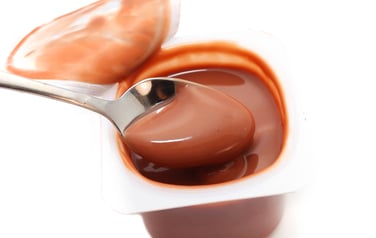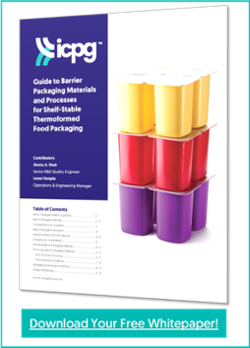 Everyone knows that food does not stay fresh forever and to pay attention to that little “sell by” date stamped on your yogurt cup or milk carton. There are a number of factors that cause food spoilage, and in turn, a variety of methods both through processing technique and barrier packaging material structures that can help to extend the shelf-life of the commercially packaged food products found throughout the aisles of your grocery store.
Everyone knows that food does not stay fresh forever and to pay attention to that little “sell by” date stamped on your yogurt cup or milk carton. There are a number of factors that cause food spoilage, and in turn, a variety of methods both through processing technique and barrier packaging material structures that can help to extend the shelf-life of the commercially packaged food products found throughout the aisles of your grocery store.
One of the main causes of food spoilage, and in turn food waste, is the growth of microbes such as bacteria, yeast and mold that feed and grow on the food product causing it to go bad. Extending product shelf life through a combination of packaging material sterilization systems and customized material barrier structures that maintain the integrity of the food product, while providing unique packaging to support brand differentiation is critical.
One example of a food packaging and processing method used to extend the shelf-life of food products is aseptic packaging and processing. Continue reading to learn more about aseptic processing.
How Aseptic Processing Works:
Aseptic processing is a packaging and processing technique in which a sterilized food product is packaged into a pre-sterilized container to produce shelf-stable food products. This processing technique allows for the food to be properly sterilized outside the container, which is ideal for foods that are sterilized using ultra-high temperature (UHT) sterilization. UHT sterilizes food at high temperatures typically above 135°C (275°F). The food is then cooled and filled into the container at room temperature.
 Sterilization of the packaging material and container prior to filling is a crucial step to this process. The container must be sterilized to kill microorganisms present in the container during forming and transport and prior to filling. This can be done through the use of heat, hot water, chemical sterilant, and radiation, or a combination of methods.
Sterilization of the packaging material and container prior to filling is a crucial step to this process. The container must be sterilized to kill microorganisms present in the container during forming and transport and prior to filling. This can be done through the use of heat, hot water, chemical sterilant, and radiation, or a combination of methods.
This step not only must assure sterile conditions within the package and protect the product from physical damage, but must also maintain the quality of the product inside the packaging through the use of a barrier material structure. Once the food and container undergo the appropriate sterilization methods, the food is placed into the pre-sterilized container and sealed in a sterile environment.
The benefit to this type of packaging is faster processing and better retention of flavor, color, texture and nutritional characteristics of the food and a product with an extended shelf-life up to 18 months.
Today, rigid form fill and seal packaging material structures provide ideal packaging substrates designed to perform throughout the aseptic process, offering customized solutions for optimizing shelf-life, safety and product protection.
Examples of market applications that use aseptic processing include:
Compatible Materials for Aseptic Processing:
In addition to the aseptic process, choosing a material structure that provides a combination of oxygen and moisture barriers also helps to extend the shelf life and reduce food spoilage and waste. ICPG material solutions compatible with aseptic packaging and processing can be customized to meet target extended shelf-life requirements with a custom multi-layer coextruded barrier rollstock structure. When developing the rollstock structure for barrier packaging applications, factors including food product, part design, processing conditions, distribution environment and retail conditions must all be considered as each variable ultimately affects shelf-life performance. Once these variables have been defined, further details such as barrier specifications, shelf-life expectations, part geometry, material attributes and part handling must all be considered to refine the design of the thermoformed part and develop a rollstock structure that will deliver optimal barrier performance. Depending on the end-use application and barrier requirements, ICPG can formulate customized coextruded barrier rollstock structures spanning using substrates such as Polystyrene, Polypropylene, and Polyethylene to meet the application requirements.
ICPG material solutions compatible with rigid plastic thermoformed containers and form-fill-seal packaging for aseptic processing include:
-
- Laminated barrier HIPS & PP structures
- Coextruded barrier HIPS & PP structures with EVOH
- XPP Enhanced Barrier PP
PS has long been the material of choice for aseptic FFS processes due to the materials' ease of processing. However, with Proposition 65 guidelines calling for material replacement in food packaging applications, the industry is looking for an alternative material to replace PS that will meet processing and application functional and barrier requirements. Use of innovative new materials, such as ICPG's XPP Enhanced Barrier Polypropylene, can offer both enhancements to OTR and MVTR barrier performance, as well as improved mechanical properties to offer a polypropylene structure compatible with form-fill-seal processes.
Download the XPP Enhanced Barrier Polypropylene product sheet for more information on PS replacement solutions for FFS applications:




